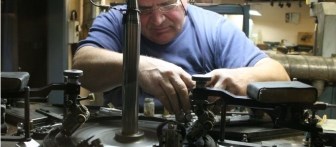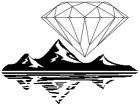
From precious stone to polished gem
Diamond manufacturing
Today, there are two ways of manufacturing diamonds. The industrial method, which meets the needs of the mass jewelry industry, is delocalized in India, Thailand and China. The second method, mainly concentrated in Antwerp, consists of the traditional polishing of quality diamonds weighing more than 0.5 carats. The Antwerp polishing craft is a tradition that goes back to the 19th century. Its secrets are kept jealously and transmitted from generation to generation. The transmission of know-how that took centuries to acquire is the best warranty of quality.
Each diamond is unique because it's been handed over to expert artists who have spent hours scrutinizing the rough crystal before cutting it. And then, as is the case for each stone polished with passion, here's the path each stone follows:
- Marking: If the stone needs to be sawn, the master cutter carefully studies it and draws a cutting line with a pen and India ink.
- Sawing: Diamonds can nowadays be sawn very precisely with laser beams. Sawing is done against the grain of the crystal. For small stones, a traditional method is rather used. The diamond is set against a high-speed vertical blade and sawn very slowly. The traditional sawing of large stones can sometimes last weeks.
- Cleaving: This technique, known for over 2000 years, is used to split a diamond in two. The principle consists in giving a sharp blow with a mallet on a blade that is set at a very precise angle. Cleaving is done parallel to the grain of the crystal.
- Girdling: Known since the Renaissance, the girdling of a rough stone is the process through which the future girdle (the round part of the diamond) is created, by polishing the stone against another diamond.
- Faceting: On a polishing wheel, each facet is applied, one by one, on the stone. Once all facets have been polished, the diamond is ready to be set in a jewel.
Isaac Beck explains the cleaving technique
Documentary film, National Geographic Channel, 1994
Next: The polished diamond >>


